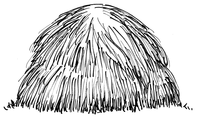Saint Saichi, the Shoemaker

Dear old and new friends,
The quantum theory which we touched on in the last reflection is difficult to understand and has scholars saying, “If you understand the quantum theory, you do not know it! Yet it is not impossible to grasp some of its amazing influence in our lives, as is often the case in a story.”
So ponder the story of the poor Japanese man named Saichi who was a devote Shin Buddhist. His lowly occupation was crafting wooden shoes the Japanese called “Geta.” While making his beautiful Getas, Saichi did so as an expression of his Buddhist spirituality. It was said that whoever wore his beautifully sandals did so with a sense of new joyfulness, with the same delight that Saichi experienced in making them. In those days it was common when a neighbor or friend was sad and gloomy for his or her friends to say, “Go, and get a pair of beautiful Getas made by Saichi!”
Quantum physics tells us that what appears as solid and inert to us, such as wooden sandals or a wooden kitchen table, aren’t lifeless. Place any fragment of either of them under a powerful microscope and you will see that it is alive, a literal sea of swirling pulsating particles. In 1920 Einstein called these particles “energy packets,” or quanta, and understood them to be a fundamental aspect of nature. Yet they resisted being defined for certain as either particles or waves of energy, while today they are understood as nonlinear waves. At the sub-atomic level these electrons are living energies that make up the wood of the table or the sandals, your body and everything else in the universe. Your wooden kitchen table also contains the sweat, feelings and emotions of those who built it, as well as the energies or emotions of those who have eaten at it. These energy waves or particles have an unconscious effect on those who sit or work at your kitchen table, just as the wooden Getas made by Saichi radiated upward his joy to those who wore them.
Pierre de Chardin said in his The Divine Milieu, “There is nothing profane here below for those who know how to see.” He saw the Divine present in all the Cosmos—from the least quantum particle of matter to the entire universe. If you and I don’t perceive God as present in creation and in the lowly labors of our hands it is because we are not looking for God there…but rather in holy places. Science today tells us we are intimately united with our work, each other and our world. As we are impoverished by every death, so our hearts are enriched by the joyous happiness of newlyweds that we absorb—to the degree our hearts are hungry and open to communion with all humanity!
So remember Saichi, the saintly shoemaker, who by his deep but unassuming holiness influenced the lives of many. If you seek the secret to a spirituality of humble holiness like Saichi’s, then seriously consider this similar teaching of the fourteenth-century German mystic Meister Eckhardt: “Wisdom—holiness—consists in doing what you have to do, doing it with your whole heart, and finding delight in doing it.”


 RSS Feed
RSS Feed